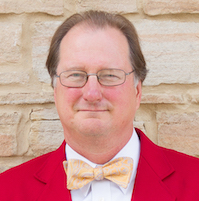
Mark D. Hill
A new episode of the Computing Community Consortium‘s (CCC) official podcast, Catalyzing Computing, is now available. In this episode, Khari Douglas (CCC Senior Program Associate) interviews Dr. Mark D. Hill, the Gene M. Amdahl and John P. Morgridge Professor Emeritus of Computer Sciences at the University of Wisconsin-Madison and the Chair Emeritus of the CCC Council. This episode was recorded prior to Dr. Hill joining Microsoft as a Partner Hardware Architect with Azure. His research interests include parallel computer system design, memory system design, computer simulation, deterministic replay and transactional memory. In this episode Hill discusses the importance of computer architecture, the 3C model of cache behavior, and overcoming the end of Moore’s law.
Below is a transcription from part of the discussion about Mark’s work with Vijay Janapa Reddi on the Gables model for modeling accelerator use on mobile systems-on-a-chip. It is lightly edited for readability and the full transcript can be found here.
[Catalyzing Computing Episode 35 – starting at 29:30]
Mark: I think we need a better science for designing chips with multiple accelerators and accelerator-level parallelism. And we tried to help a little bit with a model called Gables.
Khari: Could you discuss the Gables model? What is that?
Mark: Ok, so when you have a chip with 42 accelerators, how do you decide which ones to have, which ones to select, and how to size them and things like that? It’s just very complicated. It would be nice to have a simplified picture to get a first answer, not a final answer. Gables was our attempt to do that and it builds on something called Roofline. So the Roofline model was for a homogeneous multicore chip, which is a chip that every processor core is the same, and it modeled the chip with a peak computation performance and a peak off-chip communication bandwidth in a plot that looks like a roofline. And so what Gables did is it said, we can’t model our 42 accelerator’s that way, but we can perhaps do a roofline for each accelerator, because each accelerator is different, they’re heterogeneous, and then find a way to combine them to model the whole chip. That’s what Gables does, and Gable’s gets its name by a roof that has many rooflines.
Khari: Ok. So have you used this model on any products or technologies that have shown promise?
Mark: I have not used it on products. However, I’m aware of at least two instances, one where it was incorporated in the tool chain of a major tool provider — I’m not sure I’m allowed to say the name — and I know it was used for the preliminary development of some products at a major IT company. And they’re still using it, but I think that’s confidential.
I will say it, I think it’s better than the community thinks it is at this point, because it’s not like, you know, super popular.
[Laughter]
Khari: Yeah, maybe now people will think more about it. Anything else you want to say about the Gables model?
Mark: I’ll just say this, I think it’s important when you encounter a complicated system to try to figure out a way to get your head around it, and Gables was our attempt to do that. I think that model has value even if you don’t believe the numbers, because it gives you a way to frame your thinking about the system and pay attention to these communication and these performance things and how they interact. That’s invaluable even if you don’t believe the output of the number.
Listen to the full interview with Dr. Hill below or find it on Apple Podcasts | Spotify | Soundcloud | Stitcher | Blubrry | Google Podcasts | iHeartRadio | Youtube. If you prefer to read rather than listen, the transcript of the interview is available here.
If you are interested in appearing in an episode of the Catalyzing Computing podcast or want to contribute a guest post to the CCC blog, please complete this survey through Google Forms.
If you listen to the podcast, please take a moment to complete this listener survey – this survey will help us learn more about you and better tailor the show to the interests of our listeners.









